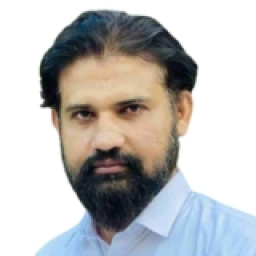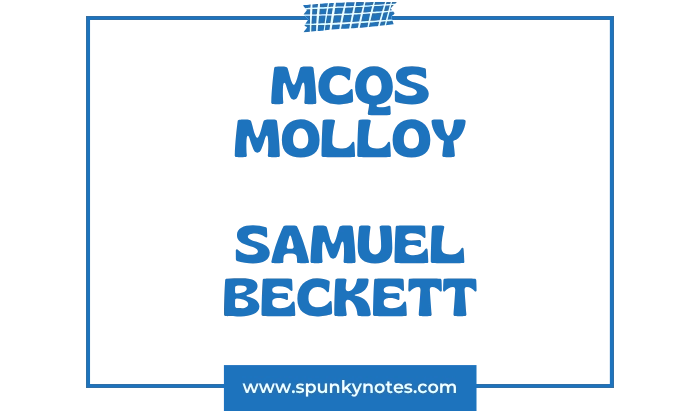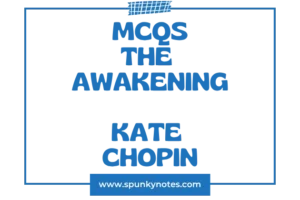

Estimated Reading Time: 16 min
Molloy MCQs
1. Where is Molloy residing at the beginning of the novel?
A. Seaside cave
B. Forest ditch
C. Mother’s old room
D. Police station
2. Who visits Molloy weekly to collect the pages he writes?
A. A kind doctor
B. A queer man
C. A strange policeman
D. A relative
3. How does Molloy describe his beginning, which the visiting man criticized?
A. Difficult but necessary
B. Like an old ballocks
C. Beside the point
D. Easy and rewarding
4. What has Molloy forgotten how to do, among other things?
A. How to work
B. How to walk
C. How to speak
D. How to spell
5. What body part does Molloy use to signal “money” to his deaf mother?
A. Index-knuckle
B. His elbow
C. Fist thump
D. His foot
6. Who does Molloy see going towards each other on a bare road?
A. Gaber and Youdi
B. A dog and a cow
C. A and C
D. Two women
7. What item of clothing did the tall man (C) with the stick wear?
A. A cocked hat
B. Hobnailed boots
C. Sand-shoes
D. A blue cap
8. Where was Molloy observing the two men (A and C) from?
A. Behind a hedge
B. Sitting on a wall
C. A high rock
D. Mother’s window
9. What type of vehicle did Molloy use to travel to his mother?
A. A motorized cart
B. An old car
C. A chainless bicycle
D. An old cart
10. What item did Molloy fasten to his buttonhole with a lace?
A. His greatcoat
B. His hat
C. His crutch
D. His button
11. Why did the policeman at the ramparts stop Molloy?
A. Riding too fast
B. Having no papers
C. Resting indecently
D. Carrying a club
12. What items did Molloy carry as ‘papers’?
A. Written pages
B. Newspaper bits
C. Identity cards
D. Birth certificate
13. What name did Molloy suddenly remember while at the police station?
A. Dan
B. Jacques
C. Molloy
D. Mollose
14. What did the woman offer Molloy in the guard-room?
A. Tea and bread
B. Water and fruit
C. Soup and milk
D. Beer and a cigar
15. What did Molloy fling away from him in a panic in the guard-room?
A. His crutches
B. The provided food
C. His paper napkin
D. His cigar
16. What was Molloy’s immediate goal after being released by the police?
A. To find shelter
B. To see his son
C. To find his mother
D. To write more pages
17. What philosophical term did Molloy credit anthropology with?
A. Defining humanity
B. Inexhaustible negation
C. Explaining love
D. Promoting magic
18. What prevents Molloy from remembering the name of his town?
A. Icy words
B. Memory loss
C. Being unable
D. Too many towns
19. What accident occurred after Molloy perfected his plan to ask the town name?
A. A sudden fall
B. Lost his money
C. Ran over a dog
D. Saw a friend
20. What was the name of the dog Molloy killed?
A. Molloy
B. Teddy
C. Baby Jack
D. Zulu
21. Why did Lousse not insist on prosecuting Molloy for the dog’s death?
A. Teddy was suffering
B. Molloy ran fast
C. She loved him
D. He was too old
22. What kind of tree did Lousse choose for the dog’s grave?
A. A sturdy pine
B. A tall oak
C. A larch
D. A weeping willow
23. What did Lousse’s parrot repeatedly exclaim?
A. Pretty Polly
B. Fuck the son
C. Come here, lady
D. Putain de merde
24. What change did Molloy discover had been done to him while he slept at Lousse’s house?
A. They dyed his hair
B. They shaved his beard
C. They stole his money
D. They removed his shoes
25. What plant did Molloy identify that Lousse loved because of its smell?
A. Wild hawthorn
B. Spike-lavender
C. Lemon-verbena
D. Night-blooming jasmine
26. What analogy did Molloy use to describe his life while staying with Lousse?
A. Air in a pipe
B. Boiling water
C. Silent song
D. Fading forms
27. What classic thinker did Molloy reference regarding the concept of freedom?
A. Socrates
B. Plato
C. Geulincx
D. Descartes
28. What was the name of the woman who acquainted Molloy with “love”?
A. Martha
B. Ruth
C. Sophie
D. Mag
29. Where did Molloy and Ruth (or Edith) first meet?
A. In a forest
B. By the sea
C. A rubbish dump
D. On a couch
30. What did Molloy say was never enough and always too much?
A. The food
B. His silence
C. What he said
D. The pain
31. What bodily need did Molloy sacrifice when devising his stone-sucking system?
A. Perfect symmetry
B. Less fatigue
C. The need for trim
D. A good appetite
32. How many sucking-stones did Molloy initially gather?
A. Eight stones
B. Sixteen stones
C. Four stones
D. Twelve stones
33. What was Molloy’s final decision regarding his sucking-stones?
A. Throw all but one
B. Keep all 16
C. Number the stones
D. Divide them equally
34. What animal was Molloy likened to when rolling to collect his keys?
A. A mangy cur
B. A great cylinder
C. A frightened sheep
D. A large stone
35. What method of locomotion did Molloy finally adopt when his legs stiffened?
A. Rolling in a barrel
B. Crawling like a reptile
C. Using a donkey
D. Lying in a cart
36. What sound did Molloy hear in the forest instead of the expected murmurs?
A. Distant gong
B. Hunting horn
C. Crying birds
D. Shepherd’s whistle
37. What type of man did Molloy encounter and subsequently strike in the forest?
A. A passing hermit
B. A sly farmer
C. A worried hunter
D. A charcoal-burner
38. What is the narrator’s name in the second half of the novel?
A. Jacques
B. Gaber
C. Moran
D. Molloy
39. What is Moran’s son’s name?
A. Molloy
B. Jacques
C. Teddy
D. Gaber
40. What was Moran doing when he received the order concerning Molloy?
A. Sitting in church
B. Sitting in the garden
C. Reading a report
D. Sleeping in bed
41. Who delivered the mission instructions to Moran?
A. Youdi
B. Martha
C. Father Ambrose
D. Gaber
42. Who is Moran ordered to find?
A. His missing wife
B. Molloy
C. Gaber
D. The Antichrist
43. Who is Moran’s superior?
A. Youdi
B. The Sergeant
C. Gaber
D. Father Ambrose
44. What was young Jacques’s hobby?
A. History
B. Gardening
C. Collecting stamps
D. Scout activities
45. What is the name of the servant?
A. Ruth
B. Martha
C. Sophie
D. Hannah
46. How did Moran see himself early on?
A. A frantic seeker
B. A solid in solids
C. A watery form
D. A free spirit
47. What vehicle did Moran initially choose?
A. The train
B. On foot
C. His autocycle
D. A bicycle
48. Where is Molloy’s country located?
A. In the mountains
B. In the north
C. In the south
D. By the swamp
49. What geographical feature is Ballyba’s main beauty?
A. Wide sandy plains
B. A slow grey creek
C. Towering forests
D. Large waterfalls
50. What bicycle feature was crucial?
A. Durable paint
B. A strong carrier
C. A loud bell
D. Working brakes
Brief Overview
Molloy is a novel by Samuel Beckett, first published in French in 1951. It is a seminal work of modernist literature and the Theatre of the Absurd. The novel explores themes of existentialism, the futility of human existence, and the nature of identity.
The novel is structurally divided into two long sections, which mirror and contradict each other. The first section is the story of Molloy, a críppled man. He lives in his mother’s room, though he has no memory of how he arrived there. He writes pages for an unnamed man who pays him money.
Molloy narrates his painful journey before arriving in the room. He initially used crutches and a bicycle while searching for his mother, Mag.
On his way, Molloy encounters a policeman and is briefly taken to a station. He later runs over a woman’s dog with his bicycle. The owner, Lousse, makes Molloy stay at her house for a time.
Molloy eventually leaves. As he travelled, his legs became painfully stiff and short, forcing him to crawl on his belly until he ended up in a ditch.
Moran, an agent, writes the second section. His boss, Youdi, orders him to find Molloy. Moran takes his young son, Jacques, on this futile mission. Moran’s own leg mysteriously becomes stiff and painful, mirroring Molloy’s condition. He sends his son to buy a bicycle.
Moran’s son later runs away completely, taking the bicycle and money. Moran grows weak from hunger. A messenger, Gaber, tells him to go home immediately.
Moran returns to his empty house in pain and is now writing his report for Youdi, using crutches just as Molloy did.
![The Nose by Nikolai Gogol [Summary and Analysis]](https://spunkynotes.com/wp-content/uploads/2023/06/The-nose-by-nokolai-gogol-summary-and-analysis-300x200.webp)

